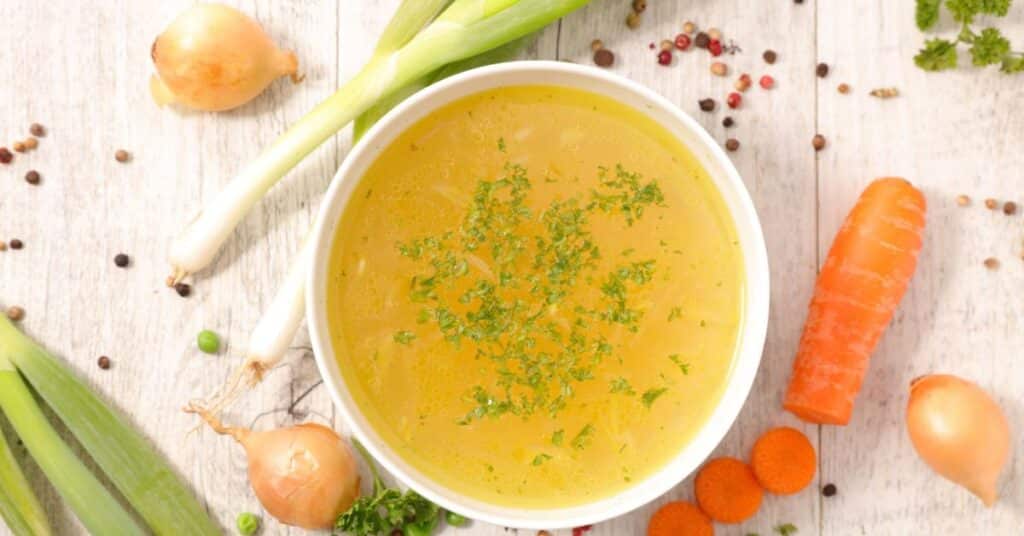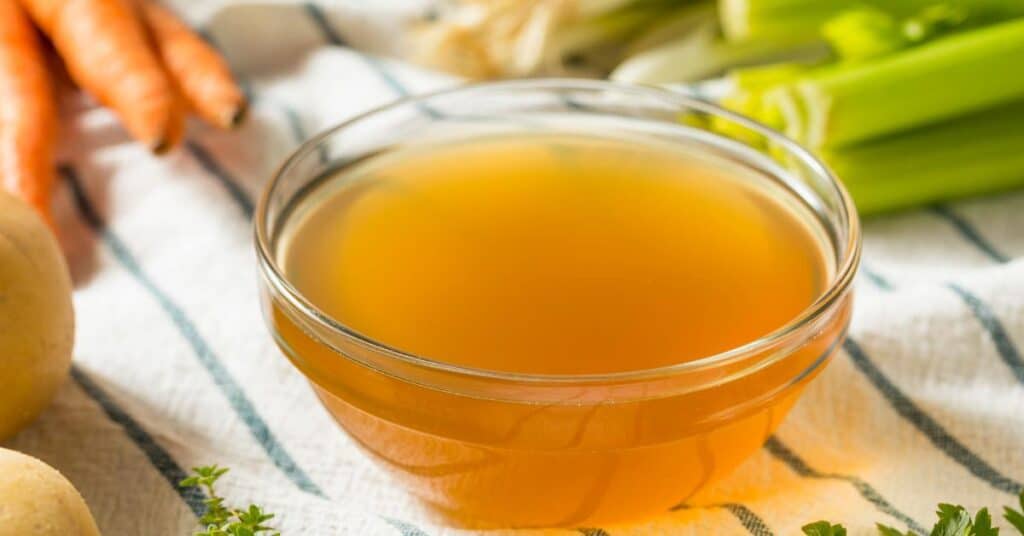Did you know that there are many vegetable broth substitutes that can still impart that savory essence? This post will explore some fantastic options that you can use if your recipe calls for vegetable broth and you don’t have any on hand or just want to switch things up.
Homemade Vegetable Broth Substitutes
Water and Seasoning
If you don’t have vegetable broth on hand, water and seasoning can be a simple yet effective substitute. Just replace the vegetable broth in your recipe with an equal amount of water, and then adjust the seasoning to your taste. You might want to add a combination of herbs, such as thyme, rosemary, or basil, and some salt or garlic powder for flavor. This way, you can control the taste and still maintain the desired consistency.
Wine
Wine also makes a great substitute for vegetable broth. It can add depth and flavor to your dish. Choose a white wine for lighter dishes or a red wine for heavier, more robust recipes. You can use wine as a 1:1 replacement for the vegetable broth, but you might want to reduce the liquid by a quarter to concentrate the flavors.
Beer
Another interesting option is beer. Using beer as a vegetable broth substitute can give your dish a unique and malty flavor. The type of beer you choose depends on the level of flavor you’d like to achieve. You can go for a lighter lager or a more intense stout or porter. Similar to wine, you can replace the vegetable broth in your recipe with beer at a 1:1 ratio and consider reducing the liquid by a quarter for a concentrated flavor profile.
Miso Paste
Miso paste is a fantastic option for a vegetable broth substitute. Mix miso paste with water to achieve the desired consistency, and you’ll end up with a rich and flavorful broth alternative. Miso paste tends to be salty, so be cautious with the amount you use and taste as you go. The ratio of miso paste to water can vary depending on your taste preferences, but a general guideline is to use 1 to 2 tablespoons of miso paste for every cup of water.
Soy Sauce
Soy sauce is another option for a vegetable broth substitute. It provides a very savory and umami flavor to your dish. When using soy sauce, we recommend diluting it with water and then adjusting the amount gradually. A ratio of 1 tablespoon soy sauce to 1 cup of water is a good starting point. Adjust as needed according to your tastes, and keep in mind that soy sauce is high in sodium, so you may want to reduce the salt in your recipe.
More Substitutes
Bouillon Cubes
Bouillon cubes are a great alternative when you need a vegetable broth substitute. They are compact, easy to store, and come in various flavors. To use them, simply dissolve one cube in a cup of boiling water, and you’ve got yourself a quick broth.
Powdered Broth
Powdered broth is similar to bouillon cubes but comes in a loose powder form. They are convenient for controlling the intensity of the flavor by adjusting the amount of powder you use. To make a vegetable broth substitute, mix the powdered broth with boiling water according to the package instructions. Keep in mind that, like bouillon cubes, powdered broth might be high in sodium, so choose a low-sodium variety if needed.
Packaged Stock
Packaged stock, either in boxes or cans, is another go-to option for a vegetable broth substitute. Available in various flavors, this pre-made liquid stock saves time and effort in the kitchen. When using packaged stock, be aware of the potential for added preservatives or high sodium; opt for organic or low-sodium varieties if possible. Simply replace the required amount of vegetable broth in your recipe with an equal amount of packaged stock and adjust the seasonings as needed.
Vegetable Broth vs. Stock
The primary difference between vegetable broth and stock lies in their preparation and ingredients. Vegetable broth typically contains a variety of vegetables and seasonings simmered in water for a certain amount of time. It has a light, aromatic flavor that’s perfect for soups, stews, sauces, and more.
On the other hand, vegetable stock usually omits the seasonings found in vegetable broth and may include additional ingredients such as mushrooms, tomatoes, and sometimes starchy vegetables like potatoes. Stocks are cooked for a longer period and concentrate more on extracting natural flavors from the ingredients, resulting in a stronger, richer flavor. While you can use them interchangeably in most recipes, keep in mind that their flavors and consistency may differ.
If you're looking for a vegan alternative to vegetable broth, you can try miso paste, liquid aminos, or soy sauce. Miso paste, made from fermented soybeans, can be dissolved in water to create a flavorful base for soups and sauces. Liquid aminos and soy sauce can be mixed with water for a similar vegan-friendly option, adding depth and umami flavor to your dishes. Remember to adjust the salt content in your recipe accordingly, as these substitutes can be quite salty.
"}},{"@type":"Question","name":"Can I use chicken broth as a substitute for vegetable broth?","acceptedAnswer":{"@type":"Answer","text":"
Yes, you can use chicken broth as a substitute for vegetable broth in most recipes. However, it's essential to consider the dietary preferences and restrictions of those who will be consuming the dish. Using chicken broth will change the dish's flavor profile and make it non-vegetarian. If you're looking for a vegetarian option, try using a vegetable-based broth or one of the vegan alternatives mentioned earlier.
"}},{"@type":"Question","name":"What's the difference between vegetable broth and stock?","acceptedAnswer":{"@type":"Answer","text":"
The primary difference between vegetable broth and stock lies in their preparation and ingredients. Vegetable broth typically contains a variety of vegetables and seasonings simmered in water for a certain amount of time. It has a light, aromatic flavor that's perfect for soups, stews, sauces, and more.
\n
On the other hand, vegetable stock usually omits the seasonings found in vegetable broth and may include additional ingredients such as mushrooms, tomatoes, and sometimes starchy vegetables like potatoes. Stocks are cooked for a longer period and concentrate more on extracting natural flavors from the ingredients, resulting in a stronger, richer flavor. While you can use them interchangeably in most recipes, keep in mind that their flavors and consistency may differ.
"}}]}


